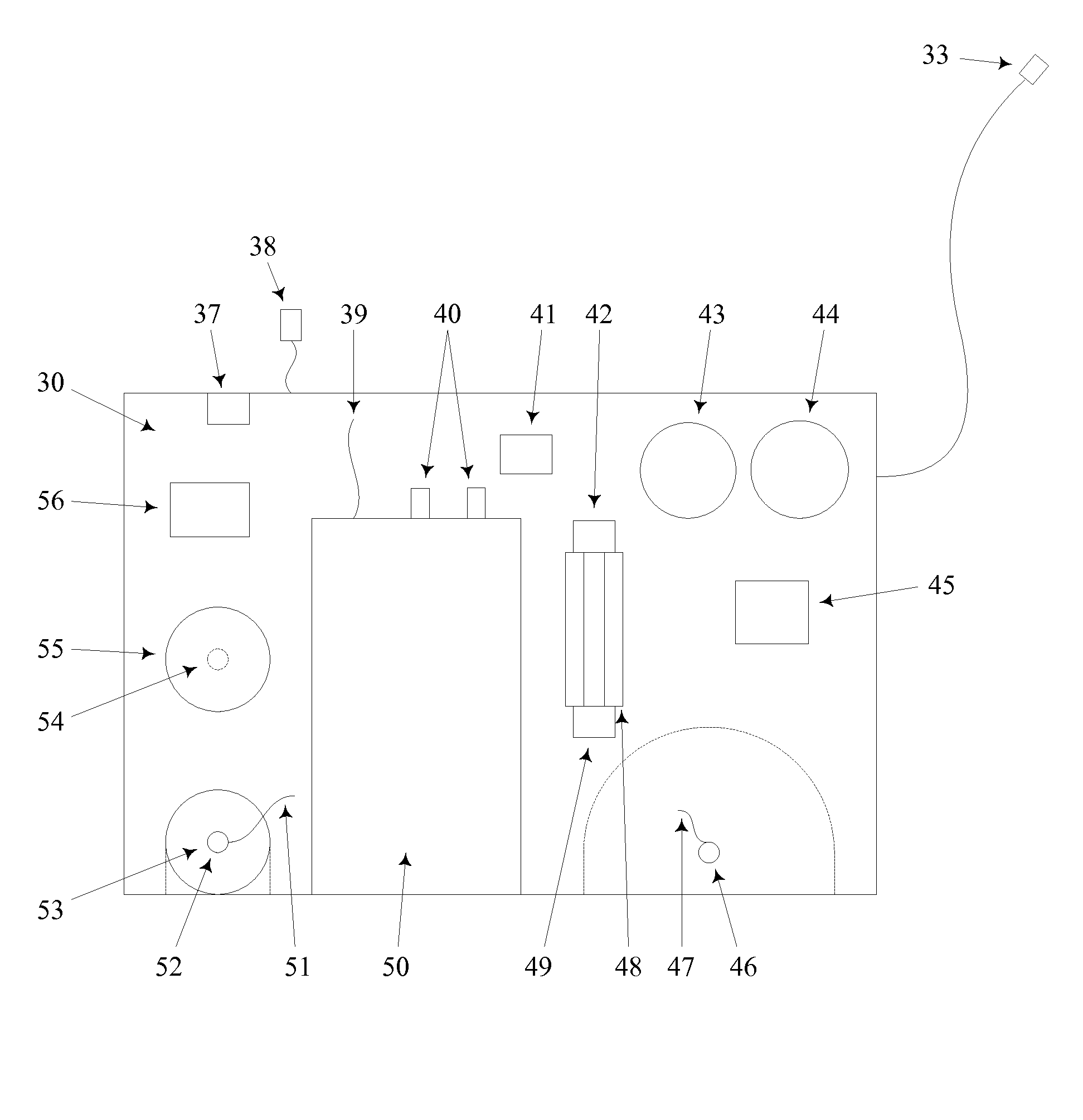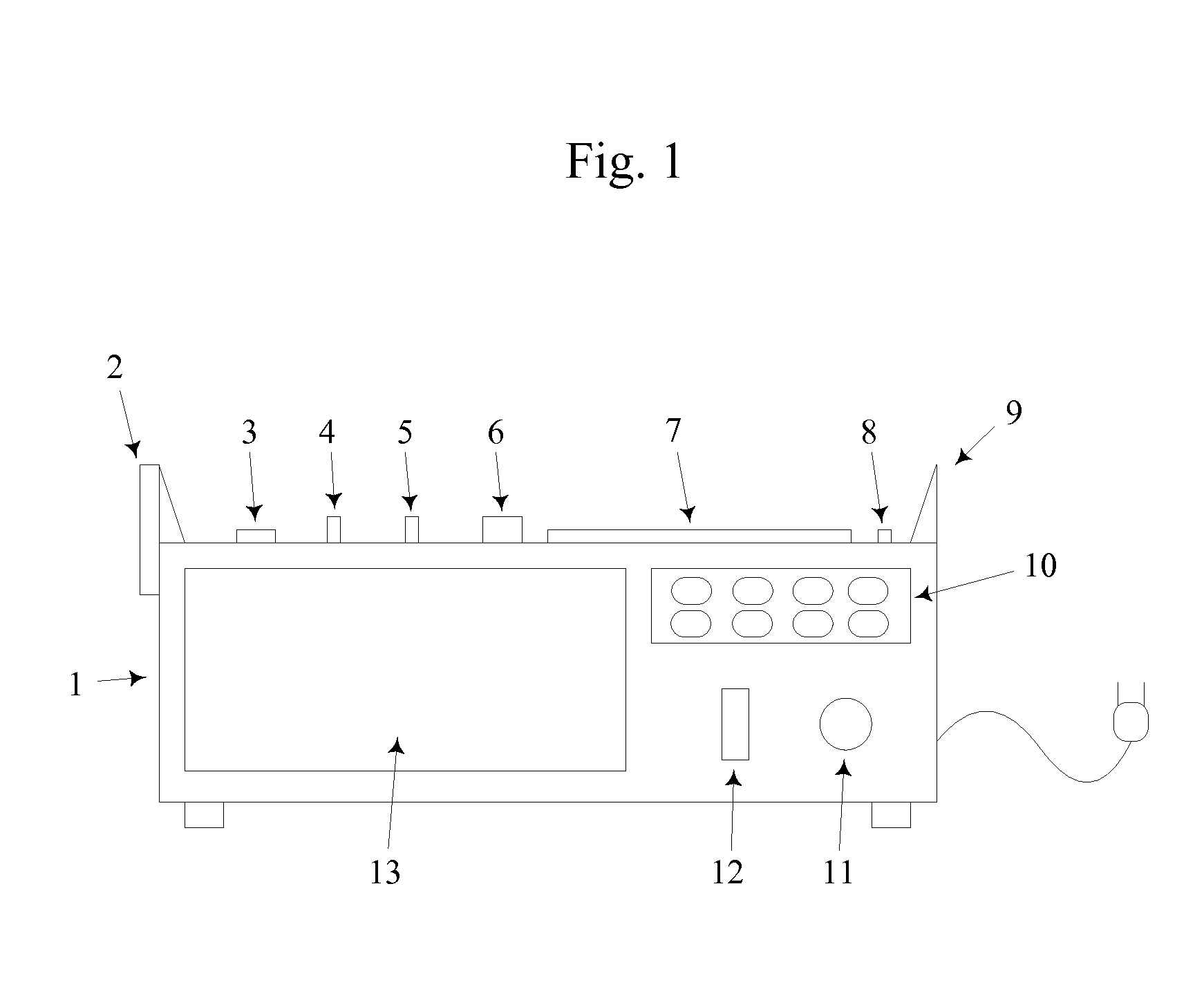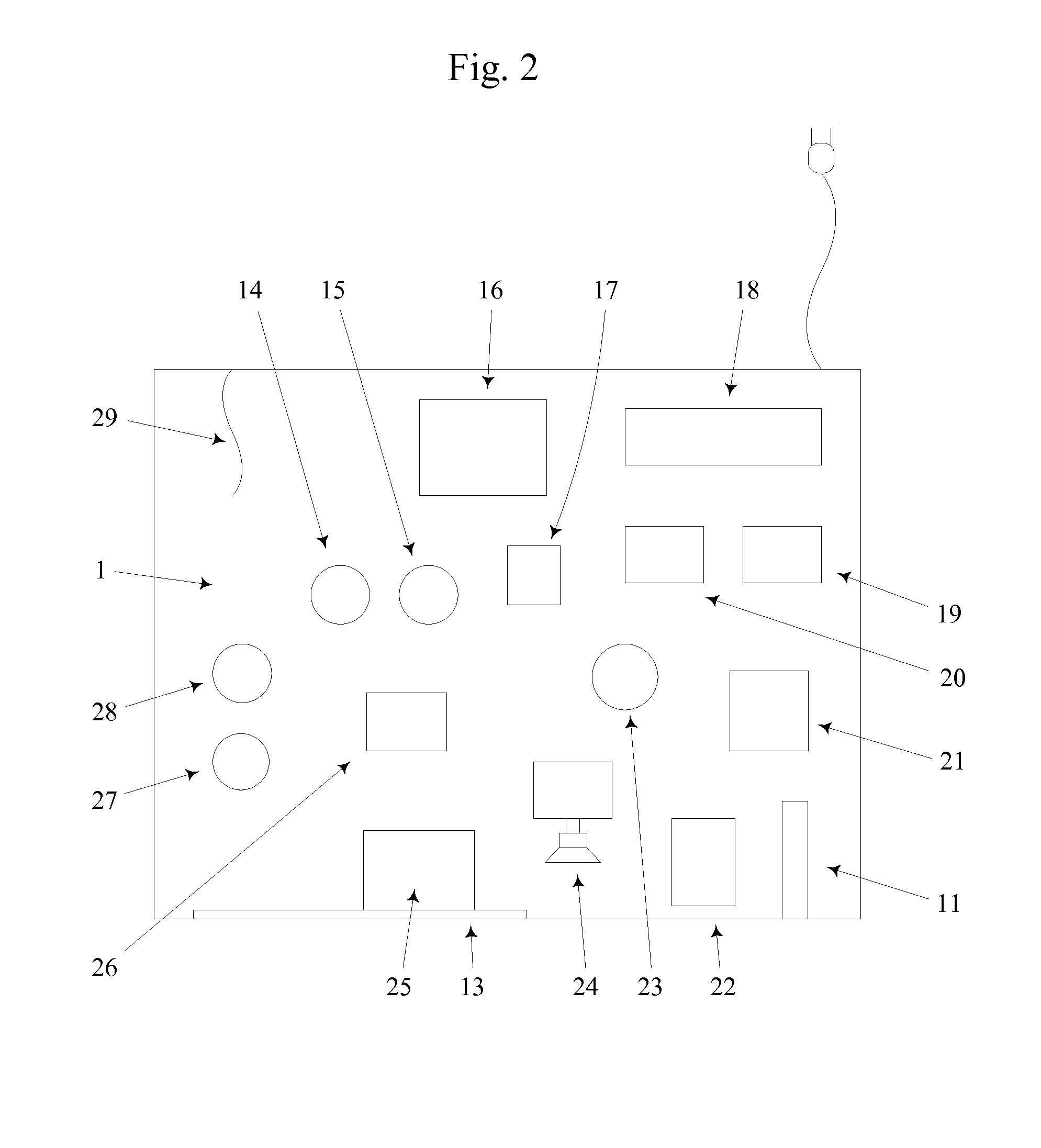Method of Peritoneal Dialysis
a peritoneal dialysis and peritoneal technology, applied in the field of peritoneal dialysis, can solve the problems of inconvenient for each peritoneal dialysis patient, inability to remove excess water and toxins, and heavy bags of dialysate, so as to reduce the chance of malnutrition in the patient, easy and instant change, and maintain good health
- Summary
- Abstract
- Description
- Claims
- Application Information
AI Technical Summary
Benefits of technology
Problems solved by technology
Method used
Image
Examples
Embodiment Construction
[0035]The Control Unit: As seen in FIG. 1, manual locking mechanism 2 is located at the top side of control unit 1. This mechanism keeps the cassette locked onto the control unit when the system is in operation, to prevent the patient from accidentally or intentionally separating the cassette from the control unit while the system is operating.
[0036]As seen in FIG. 1, electrical connector 3 is located in the top face of control unit 1. This connector mates with connector 56 in cassette 30 (see FIG. 4) when the cassette is attached to the control unit. This allows two-way electronic communication between the control boards in the control unit, and the sensors in the cassette.
[0037]As seen in FIG. 1, valve actuator 4 for the triple 3-way fluid valve is located in the top of control unit 1. This actuator turns the valve from position 1 to position 2, and back again. Dialysate is pumped from the patient when the valve is in position 1, and dialysate is pumped into the patient when the v...
PUM
 Login to View More
Login to View More Abstract
Description
Claims
Application Information
 Login to View More
Login to View More - R&D
- Intellectual Property
- Life Sciences
- Materials
- Tech Scout
- Unparalleled Data Quality
- Higher Quality Content
- 60% Fewer Hallucinations
Browse by: Latest US Patents, China's latest patents, Technical Efficacy Thesaurus, Application Domain, Technology Topic, Popular Technical Reports.
© 2025 PatSnap. All rights reserved.Legal|Privacy policy|Modern Slavery Act Transparency Statement|Sitemap|About US| Contact US: help@patsnap.com



